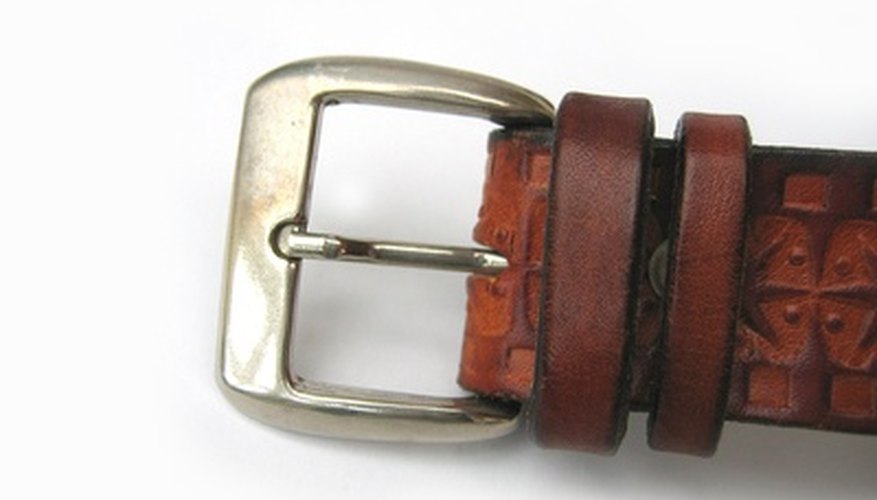Belt buckles come in just a few distinct styles. Repairing each style requires a different approach, but all of them can be completed with simple tools and techniques. Because most belt buckles include very few parts, they are relatively easy to diagnose when they break, and their repairs can be performed quickly. Consider the type of buckle that needs repairs, then fix it and give that old belt some new life.
- Belt buckles come in just a few distinct styles.
- Because most belt buckles include very few parts, they are relatively easy to diagnose when they break, and their repairs can be performed quickly.
Check the connection between the belt and the buckle for missing screws. If one or more of these screws are missing, remove the others with the screwdriver.
Separate the buckle from the belt by pulling it off.
Cut the buckle end of the belt with the scissors so that it is square. Remove as little material as possible.
Slip the buckle back onto the cleanly cut belt.
Insert two new screws to the holes on the buckle. Fasten them down with the screwdriver.
Cut the threads that fasten the belt to itself near the buckle with the scissors or razor.
- Cut the buckle end of the belt with the scissors so that it is square.
- Cut the threads that fasten the belt to itself near the buckle with the scissors or razor.
Unfold the belt and remove the metal buckle from the belt.
Examine the buckle for damage. Slip each metal loop over the metal shaft that holds it together, if they have become uncoupled. Crimp each connection together with pliers, if necessary.
- Examine the buckle for damage.
- Slip each metal loop over the metal shaft that holds it together, if they have become uncoupled.
Braze two pieces of broken metal back together using a torch and flux, if necessary. Secure the two pieces tightly together, with a clamp. Strike the torch, and touch the flux rod to the seam. Apply heat and allow the flux to enter the seam. Cool, holding the two pieces of metal together. Allow the metal to cool completely before handling.
Replace the clasp or pin, if necessary. Cut a piece of clothes hanger wire several inches long. Fold one end of it into a closed loop around the buckle with the pliers. Cut the straight end to size with the cutting edge on the pliers, or with diagonal cutters.
- Replace the clasp or pin, if necessary.
- Cut the straight end to size with the cutting edge on the pliers, or with diagonal cutters.
Pass the belt through the centre of the buckle and fold it back over itself. Use the preformed hole in the belt to hold the clasp, or pin, in place.
Sew the belt back together where the material is doubled over itself.
TIP
Many belt buckles use modular designs. If the buckle is in pieces, look at some other similar buckles to help decide how best to put it back together.
WARNING
Use caution when handling blades and needles. If brazing, wear all appropriate safety equipment, such as goggles and gloves. Always braze in a secure, open-air environment, and treat the open flame with caution.
